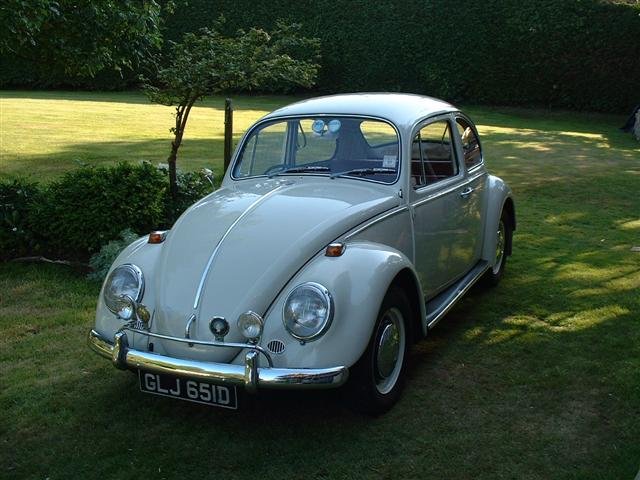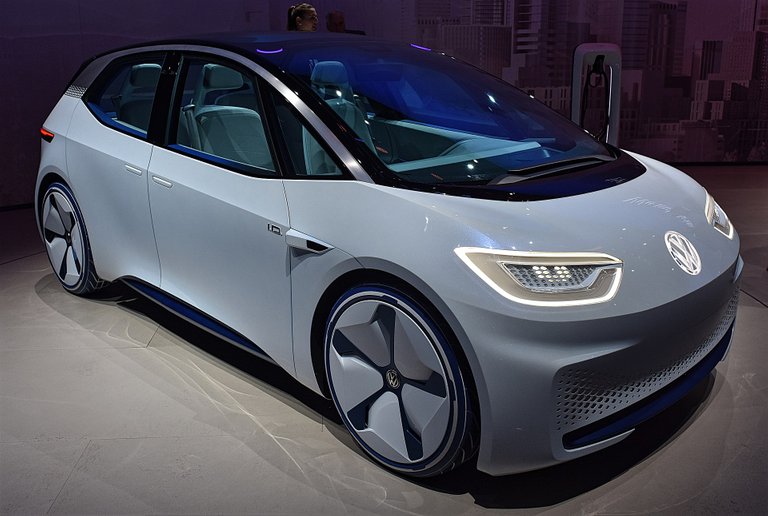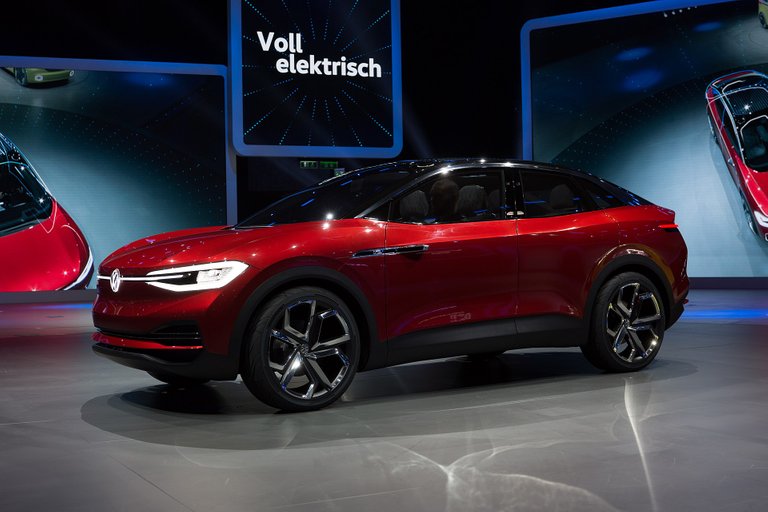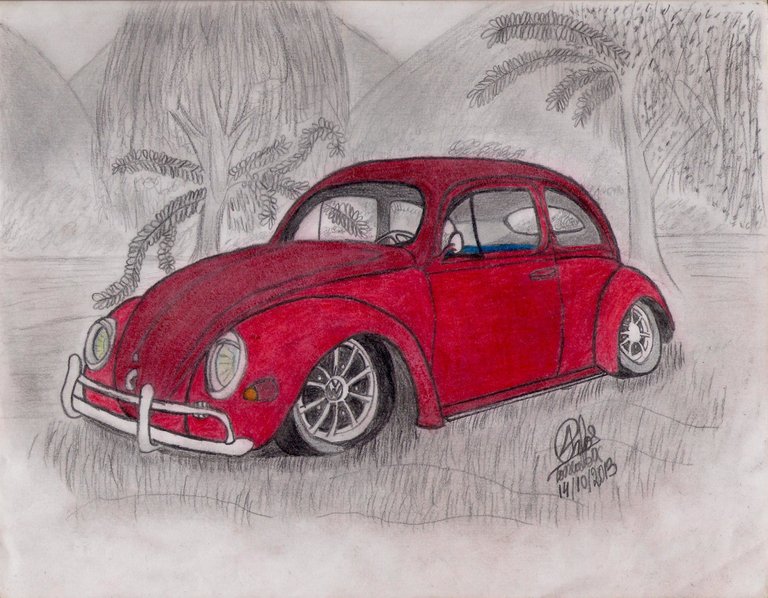Probably everybody living on planet earth heard about Volkswagen. The German car manufacturer was caught while cheating on diesel emission tests on a variety of different models. This caused a huge debate about the sustainability and effectivity of diesel engines and accelerated the movement of the brand towards an all-electric future. While the company currently undergoes not very glorious times, the history of the huge cooperation remains very interesting.
The beginnings
The idea of a Volkswagen (peoples car) was around long before the first real VW was produced. The rapidly growing automotive industry in the United States demonstrated, that the future of the car belongs to smaller, mass-produced and cheaper vehicles. At that time, only very wealthy people in Germany could afford an own car and the average worker was barely able to buy a motorcycle.
The name "Volkswagen" was later used at the International Motor show in Berlin in the 1930s to define a new genre of very fuel-efficient models made by Opel, BMW, Ford, and others. The development of these more affordable cars showed good progress when the Weimar Republic collapsed and the Nazis established their dictatorship.
The first real Volkswagen started his development on June 22nd in 1934, when the "Reichsverband der Deutschen Automobilindustrie"(RDA; association of the German automotive industry) commissioned the development of the car to Ferdinand Porsche. Adolf Hitler wanted the car to be affordable for every worker in Germany, therefore the suggested price with 990RM(~$380 in 1930 USD) was really low. In fact, the price was seen as too low to be profitable for any of the companies instructed with the development of the car. Since the financial challenges remained unsolved, the development stopped immediately and showed no further progress.
The shut down of the project ended when the "Deutsche Arbeitsfront"(German labor front) stepped in to push the project further. The now renamed KdF-Wagen_(strength through joy)_ was part of the Nazi-propaganda to strengthen the German nation and the belief in the Nazi-party. On May 28th in 1937 the "Gesellschaft zur Vorbereitung des Deutschen Volkswagen mbH" (Company for the preparation of the German people's car Ltd.) was founded, only to be renamed to "Volkswagenwerk GmbH" (Volkswagen factory Ltd.) a year later. Supported by a massive marketing campaign for the vehicle, the German labor front introduced a savings plan for every worker interested. Since the car was still too expensive for most of the workers, the interest was very low.
In 1938 the construction of the main factory close to Fallersleben began. The design was heavily inspired by the modern Ford factory in Detroit. Even though limited resources slowed down the process, the main factory was initially put into operation, while still under construction, in 1938.
Volkswagen during the Second World War
After the beginning of the second world war, the Volkswagen factory was re-purposed for the production of military equipment. On behalf of "Luftwaffe"(Airforce) the company repaired airplanes of the type Ju 88 and supplied different parts for the airforce. After the year 1940 Volkswagen began with the mass-production of military vehicles. During the war period, the company produced 66,285 military vehicles in total.
In order to increase the capacity, VW started to acquire companies based in Luckendwalde and Ustron and extended the production line inside underground tunnels. After several bombings of the main factory, the production process was decentralized and continued in smaller improvised locations.
Due to the increased production of military equipment, the demand for workers couldn't be covered by the initial workforce of the factories. In order to meet the requirements, polish women were forced to work for the company. Since the demand kept rising, concentration camp inmates and prisoners were forced to work there as well. The forced workers were later released by the American troops arriving on April 11th, 1945.
After the war
After the end of the war, the British military government took control of the company. Since the Britains had control over the large occupation zone the troops faced several transportation-related challenges. To fix these, the British government ordered a total of 20,000 VW sedans. In December of 1945 the production of the Volkswagen sedan began and by the end of this year, 55 cars were built.

By User Howard81, Source: Wikipedia
In the late 1960s to the 70s the Beetle became a huge success. Even though the model was becoming technically outdated, the was seen as very reliable. As the sales of the Beetle declined, VW expanded their product line. In spring 1974 the Scirocco was introduced and later that year the Golf was launched.
The VW Group
Nowadays, the Volkswagen group is one of the largest automotive companies worldwide. Over the course of time, VW made a lot of acquisitions in an effort to expand their product portfolio. Currently, the Volkswagen Group owns the following companies
- Volkswagen
- Audi
- Skoda
- Seat
- Bentley
- Lamborghini
- Bugatti
- Volkswagen Nutzfahrzeuge (commercial vehicles)
- Scania
- MAN
- Ducati
- Porsche
The diesel emissions scandal
The diesel affair is one of the biggest scandals in the automotive world. Tests of different vehicles with the VW A189 and VW EA288 revealed a system to manipulate the engine control software in order to pass U.S regulations regarding the emissions of poisonous nitrogen oxide. This was revealed by a Notice of Violation issued by the Environmental Protection Agency. Accoding to the second Notice of Violation, this behavior was also observed by other models built by the VW subsidiaries Porsche and Audi. The manipulated software was installed on more than 11 Mio. cars around the world. As a reaction to the fraud, several lawsuits against VW have been filed accross the globe.
The future
In an effort to move towards an all-electric future, VW introduced a new series of concept cars. The first model of the I.D. product line was announced back in 2016. All of the vehicles are based on a modular electrification kit. The series is focused on long-range fully electric vehicles with self-driving capabilities. The first models are set to be delivered in 2020 with the production starting in 2019. According to VW, all of these vehicles will become fully autonomous in 2025. The self-proclaimed goal of Volkswagen is to produce 20 vehicles based on the modular electrification kit until the year 2025.

By Nicolas Völcker - Own work, GFDL, Source: Wikpedia

By Matti Blume - Own work, CC BY-SA 4.0, Source: Link
Great post. Keep up the good work! @originalworks
Thank you! I've put a lot of effort into it. Appreciate your feedback.
me gustan mucho este tipo de autos tengo un dibujo lo mostrare espero sea de su agrado

Looks great! I wish I would be that good at drawing
Peace, Abundance, and Liberty Network (PALnet) Discord Channel. It's a completely public and open space to all members of the Steemit community who voluntarily choose to be there.Congratulations! This post has been upvoted from the communal account, @minnowsupport, by MoVo99 from the Minnow Support Project. It's a witness project run by aggroed, ausbitbank, teamsteem, theprophet0, someguy123, neoxian, followbtcnews, and netuoso. The goal is to help Steemit grow by supporting Minnows. Please find us at the
If you would like to delegate to the Minnow Support Project you can do so by clicking on the following links: 50SP, 100SP, 250SP, 500SP, 1000SP, 5000SP.
Be sure to leave at least 50SP undelegated on your account.
Your Post Has Been Featured on @Resteemable!
Feature any Steemit post using resteemit.com!
How It Works:
1. Take Any Steemit URL
2. Erase
https://3. Type
reGet Featured Instantly & Featured Posts are voted every 2.4hrs
Join the Curation Team Here | Vote Resteemable for Witness
Nice article, Im a big fan of vw beetles, my first car was a lemon yellow vw 1300
It's amazing to see how fast the development of cars went within the last decades. But I still love these old-timers!